Succulents have grown in popularity over the last few years because they can thrive in almost any condition. These are species of plant life that can grow in poor soil and extreme drought, and there are some varieties of succulents that can be perfectly fine under a blanket of snow.
Because of their natural ability to store water in their stems and leaves, succulents can go without water for weeks. However, sunlight is another matter.
Why Succulents Need Sunlight
We all know that plants need sunlight to produce food and succulents are no exception.
In addition to producing food, succulents need sunlight to help them achieve their full spectrum of colors.
Sunlight won’t be a problem if you grow your succulents in an outdoor garden. However, if you decide to have succulents as your houseplants, you have to be sure that they’re located in areas that can receive enough sunlight.
How much sunlight is enough?
Generally, succulents need up to 6 hours of sunlight every day. Some types of succulents require full or direct sunlight but for the majority, partial exposure will do just fine.
Thus, when growing succulents indoors, you must situate the succulent in an area that gets 6 hours of sunlight on a daily basis.
7 Best Indoor Succulents For Low-Light
Unfortunately, not every home has a window that brings in a healthy amount of the sun’s rays.
If you live in the Northern Hemisphere, a south-facing window can get you consistent sunlight throughout the day. East-facing windows can welcome the morning sun while windows that face the west can bring in the late afternoon sunlight.
Now, if your windows are facing north, you’ll have a problem. North-facing windows in the Northern Hemisphere don’t receive sunlight.
Of course, you can always place your succulents under an LED Grow Light but there’s another more convenient option: Grow succulents that can successfully grow under low-light conditions.
To help you out, we’ve prepared this list of the 7 best succulents that you can grow indoors under low-light conditions.
1. Sansevieria trifasciata
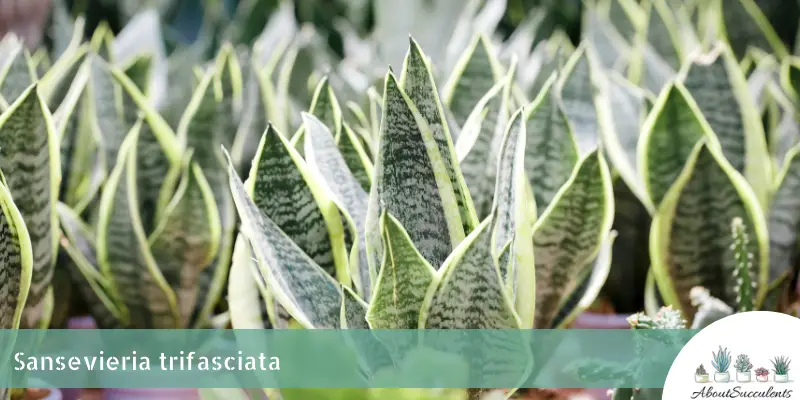
If you’re growing indoor succulents for the first time, start out your hobby with Sanseveria trifasciata.
Also known as Snake Plant because of its long, flat, green-colored leaves that come with different markings and curl and twist as if writhing like its reptilian namesake, Sanseveria trifasciata is a low-maintenance succulent.
It will do just fine without water for a month and only needs exposure to partial sun to survive. However, to help Snake Plant attain its full colors, it would be best to bring the succulent out in the garden or the patio to get a few hours of direct sunlight every few days.
2. Aristaloe Aristata
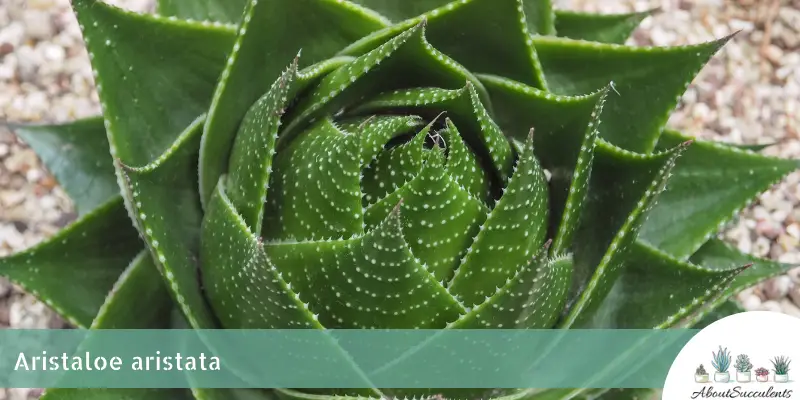
Aristaloe aristata best exemplifies the saying ‘big things come in small packages’. Native to South Africa, ‘Lace Aloe’ is a small, low-growing succulent plant that won’t grow more than 18 inches (45 cm) in height but has a reputation for tolerating long periods of drought.
Lace aloe is distinguished by its dark-colored and triangular-shaped leaves that are covered in white spikes and hair-like structures called cilia. In the summertime, Lace aloe will bloom peach-colored flowers that usually attract bees in the garden.
As an indoor plant, Aristaloe aristata can feel at home nestled beside a window that brings in partial light for up to 6 hours per day.
3. Echeveria ‘Lola’
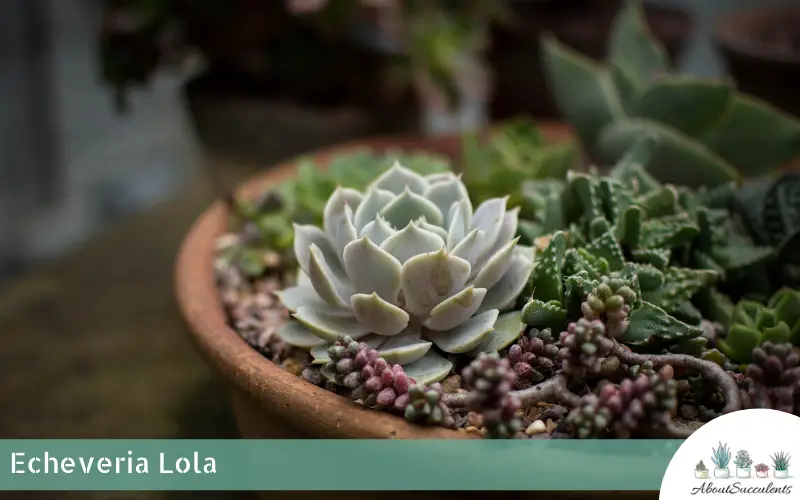
You can’t go wrong with the Echeveria genus because these types of succulents are resilient, require little maintenance, and are fun and easy to grow and care for.
Thankfully, there are many varieties of Echeverias to choose from and one of the best is Echeveria ‘Lola’ because it does better under low-light conditions. Even as outdoor garden plants, it’s recommended that Lola is exposed only to partial sunlight.
Echeveria ‘Lola’ only grows to a maximum height of 6 inches (15 cm) and is a wonderful addition to your living room, kitchen, or dining room. Its small, plump, bluish-green leaves form a compact rosette that looks charming and elegant.
Watch out for small, bell-shaped flowers in the spring or summertime. The flowers might come out with yellow or orange-colored petals. Another name for Echeveria ‘Lola’ is ‘Hens and Chicks’ because it produces offsets or pups that you can use to propagate more of the species.
4. Ceropegia woodii variegata
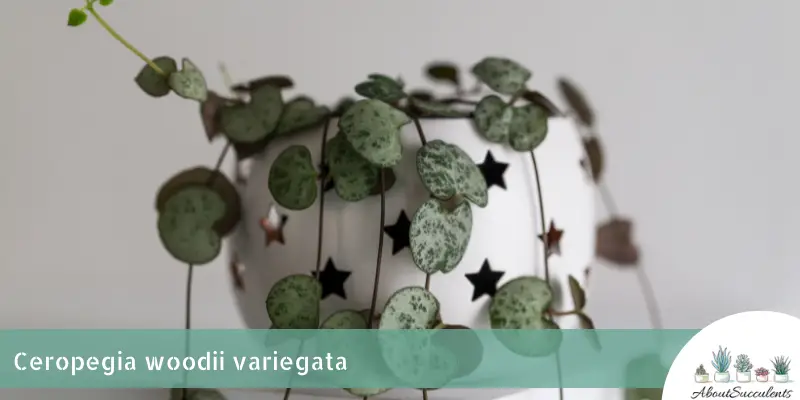
Finding a perfect succulent for your home might be a tall order but if ever there was a variety that was close it might be Ceropegia woodii variegata and for a few good reasons.
Let’s start with its alluring and captivating heart-shaped leaves that might appear as cream, green, or pink with purple-colored stems. The surface of the leaves is marked with lovely speckles that give them definition.
The leaves can trail as far as 3 feet (90 cm) which makes the aptly named ‘String of Hearts’ or ‘Rosary Plant’ a wonderful addition to your living room, kitchen, or patio.
When grown indoors and with low-light conditions, Ceropegia woodii variegata can still bloom small, trumpet-shaped, and brownish-pink flowers in the late summer or early fall seasons.
Finally, low-light conditions are actually better for String of Hearts because exposure to partial sun is how you bring out the purplish color of its stems. And compared to other varieties of succulents, 4 hours of partial sunlight is good enough for Rosary Plant.
5. Senecio Rowleyanus
Another excellent choice as a hanging succulent is Senecio rowleyanus or ‘String of Pearls’.
The leaves of Senecio rowleyanus will surely elicit smiles from your guests as these look like a cascading waterfall of plump, green-colored grapes. If you have bookshelves, frame them with String of Pearls trailing from colorful hanging baskets all the way to the floor.
Senecio is one of the most popular genera of succulents because they can adapt to low-light conditions and String of Pearls is no different.
Find Senecio’s hanging basket in a good location that gets a fairly decent amount of partial light and it will remain happy and healthy. In the springtime, String of Pearls will surprise you with exquisite, cream-colored, and daisy-like flowers that emit a slight scent reminiscent of cinnamon.
6. Cotyledon Tomentosa
Cotyledon tomentosa is also known as ‘Bear’s Paw’ and the nickname is attributed to its unusual-looking green-colored leaves that are small, plump, curve upward, and has red margins.
You can expect ‘Bear’s Paw’ to gift you with bell-shaped, orange-colored flowers in the spring.
If you’re planning to have an indoor garden, Cotyledon tomentosa will be an excellent first choice because its fuzzy leaves will give your arrangement contrast and texture.
‘Bear’s Paw’ will be just fine under low-light conditions. Just make sure it’s situated in a place that welcomes up to 6 hours of partial sunlight every day.
7. Gymnocalycium mihanovichii
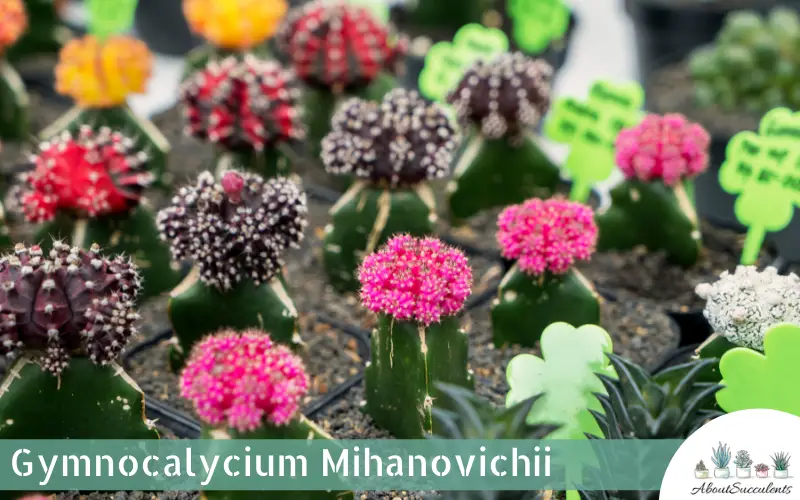
If you get tongue-tied pronouncing its scientific name, just refer to Gymnocalycium mihanovichii by its common name, ‘Moon Cactus’. And what an apt name that is because ‘Moon Cactus’ looks like it is evidence of plant life on another planet.
The reason for ‘Moon Cactus’ wow-inducing appearance is that this succulent is actually a combination of 2 different types of cacti: the Hylocereus and the Gymnocalycium which is the striking ruby red-colored, ball-shaped bud that’s grafted on top of the plant.
The globe-like Gymnocalycium doesn’t produce chlorophyll and thus, the flowers that bloom in winter or early spring might show up in a variety of colors such as pink, yellow, orange, and white.
Conclusion
It doesn’t matter where you live or how your home is designed. You can still grow succulents even if lighting conditions aren’t ideal. That’s the allure of succulent plants and why they’ve become so popular for some time now.
You can grow them in your office, your school dormitory, in a hotel, or in a restaurant. The succulents we featured in this article will survive and blossom when grown indoors even when lighting conditions are less than ideal.
Last Updated on December 20, 2022 by Sofia Lara